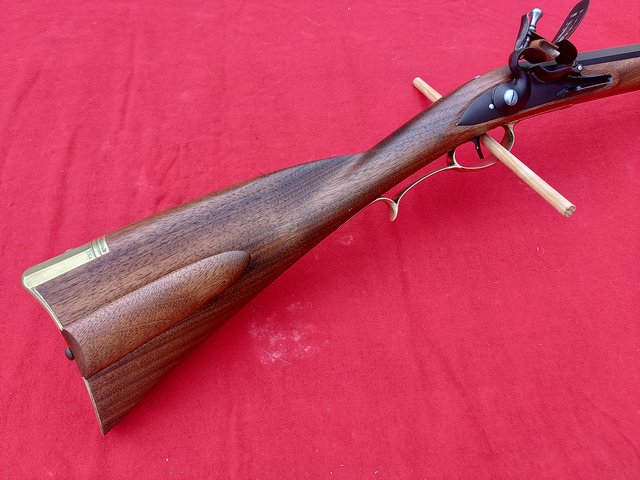- Joined
- Oct 19, 2021
- Messages
- 2,734
- Reaction score
- 5,081
- Location
- Far Away Downs Queensland Australia.
Not if I use the franchise sytem and sub-contractors !If business is good you won't have any energy left to build the dang gun.

Not if I use the franchise sytem and sub-contractors !If business is good you won't have any energy left to build the dang gun.
I have only worked with walnut for cabinets/trim and paneling. So I’ve encountered several levels of quality. Either way American walnut can be good materialEnglish walnut is the proper wood for these guns. Maple isn’t. I’ve never seen one of this period stocked in maple. We have sucomed to pressure and offer it.
English is generally very expensive and not readily available, so we offer black walnut. Not all black walnut is highly porous. We will be offering a stain kit to more closely mimic English walnut.
If we can find good sources offering English Walnut at reasonable prices, this will be an option. I’m not holding my breath about reasonable prices…
Within the general classification of the smooth bored gun, barrel lengths ran the gamut from 42" to 60"-72" during the eighteenth century. Bores ran from 28 ga to 10 ga. In the 19th century barrels shortened considerably. Trade guns were usually of smaller bore diameter than military muskets. Hudson valley fowling pieces and buccaneer muskets were huge, with large bore diameters and great long barrels.Maybe a silly question....My wife is used to them...but historically for this firearms purpose, what were the most common barrel sizes, and intended game use? I know certainly "intended game use" was often circumstantial....I have read many accounts of bear/deer etc. getting blasted by whatever rifle was had, despite the often anemic bore size....
What was the most common smooth bore size for hunting in this era/ region? not especially for just this particular recreation....

For those that have extensively studied these guns, what gauge is thought of as the most popular? I have read that the 16 was favored by many but as always the common fellow might have preferred something smaller.Within the general classification of the smooth bored gun, barrel lengths ran the gamut from 42" to 60"-72" during the eighteenth century. Bores ran from 28 ga to 10 ga. In the 19th century barrels shortened considerably. Trade guns were usually of smaller bore diameter than military muskets. Hudson valley fowling pieces and buccaneer muskets were huge, with large bore diameters and great long barrels.
Any chance said stain kit will be offered once these start shipping or would that be a few months out?English walnut is the proper wood for these guns. Maple isn’t. I’ve never seen one of this period stocked in maple. We have sucomed to pressure and offer it.
English is generally very expensive and not readily available, so we offer black walnut. Not all black walnut is highly porous. We will be offering a stain kit to more closely mimic English walnut.
If we can find good sources offering English Walnut at reasonable prices, this will be an option. I’m not holding my breath about reasonable prices…
I read somewhere recently that he recommends the 20 gauge if you want to shoot patched round balls. Most of these fowlers were originally made in England with English walnut...which he doesn't have at the moment because it is cost prohibitive, but he is looking for a source. He is supposedly going to have stains available to make it look like English walnut.So can we sling a round ball out of it, or not? Last I saw from Jim, he didn't recommend it. And what's the reason Walnut is recommended?
@Jim Kibler Would you recommend any of these wood fillers for walnut?We intend to put a stain kit together, but just haven't had the time yet. I would suggest a light wash coat of yellow aniline dye. After this you could add some red dye to the finish as it's built up. Also, it would be a good idea to fill the grain with a dark wood grain filler.
Thanks,
Jim
Enter your email address to join: